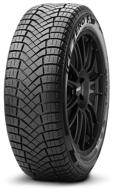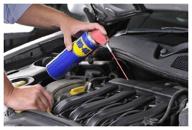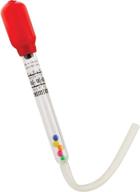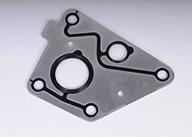How to check the freeze point of your antifreeze?
Checking the freeze point of your antifreeze is important to ensure it still provides adequate protection against freezing and overheating. Here are a few methods to test the freeze point:
Use an antifreeze tester
An antifreeze tester like the Mini Antifreeze Tester 46664 is the quickest and easiest way to check the freeze point. Here's how to use it:
- Draw a sample of antifreeze from your radiator or overflow tank using the included syringe.
- Fill the plastic vial up to the fill line with the antifreeze sample.
- Insert the vial into the tester hole and screw the cap on tightly.
- Shake the tester gently and watch the internal cylinder closely. The antifreeze sample will solidify at its freeze point and trap the cylinder from moving freely.
- Read the freeze point from the scale where the cylinder stopped moving. Compare this to your antifreeze manufacturer's recommendations.
Use a refractometer
A refractometer measures the freezing point of antifreeze based on its refractive index. To use one:
- Place 1-2 drops of antifreeze on the prism and close the cover.
- Look through the eyepiece and point the refractometer toward a light source.
- Read the freeze point where the blue and white fields meet in the viewfinder.
A refractometer provides more accurate readings than test strips. But an antifreeze tester is often more convenient for DIYers.
Look for signs of poor freeze protection
If your antifreeze is old or contaminated, you may notice issues like your engine overheating, the radiator freezing, or corrosion in the cooling system. Have a mechanic check the antifreeze if you suspect it may be compromised.
Testing the freeze point of your antifreeze annually is recommended to maximize engine protection and cooling system longevity.
How to test antifreeze with a refractometer?
Using a refractometer is one of the most accurate ways to measure the freeze point and concentration of your engine's antifreeze. Here is a step-by-step guide:
Similar products
Gather your supplies
You'll need:
- Refractometer
- Plastic pipette or dropper
- Distilled or deionized water for calibration
- Sample of antifreeze from your vehicle
- Microfiber cloth for cleaning
Calibrate the refractometer
Calibrating with distilled water sets the baseline reading at 0% antifreeze concentration. To calibrate:
- Use the pipette to place 2-3 drops of distilled water on the prism.
- Close the daylight plate and point the eyepiece toward a light source.
- Look through the eyepiece and turn the calibration screw until the boundary line reads 0%.
Test the antifreeze sample
- Use the cloth to dry the prism. Add 2-3 drops of antifreeze.
- Close the daylight plate and look through the eyepiece.
- Read the concentration where the blue and white fields meet.
- Convert the percentage to the freeze point using the conversion chart.
Refractometers provide very accurate antifreeze readings. Make sure to calibrate it regularly and keep the prism clean for best results.
Testing antifreeze yearly with a refractometer can help identify when it needs to be changed, maximizing cooling system protection.
Another interesting products
How to know if your antifreeze needs changing?
Antifreeze breaks down over time and needs to be replaced to keep your engine properly protected. Here are some signs it may be time for new coolant:
Checking antifreeze color
The color of antifreeze can indicate its condition:
- New antifreeze is bright green, orange, red, or yellow
- Dark/brown color means it may be rusty and contaminated
- Fluorescent color indicates high alkalinity from corrosion
- Oily sheen signals contamination with oil or transmission fluid
Testing antifreeze protection
Using a refractometer or antifreeze tester to check the freeze point is the best way to know if protection has declined. Change antifreeze if it tests more than 10°F above the manufacturer's recommendations.
Engine overheating
If your engine starts overheating, low coolant levels or antifreeze breakdown could be to blame. Topping off or flushing the system with new antifreeze may help.
Signs of corrosion
Look for build-up of white powdery deposits around hose connections. This indicates calcium and magnesium corrosion. Replacing deteriorated antifreeze will minimize further corrosion.
Age of antifreeze
Most antifreeze lasts 3-5 years or 30,000-50,000 miles in good conditions. But aging alone can cause it to lose effectiveness. Sticking to manufacturer drain intervals is recommended.
Catching antifreeze breakdown before damage occurs makes changing it regularly important. Use these signs to identify when your coolant needs replacement.
How to prevent engine damage from old antifreeze?
Letting old, degraded antifreeze linger in your engine can lead to costly damage. Here are some tips to help prevent issues:
Flushing the cooling system
A complete flush is the best way to get all old antifreeze out of the engine. Here's how:
- Drain the existing antifreeze from the radiator and engine block.
- Fill with water and run the engine to temperature to circulate it.
- Drain the dilution and repeat flushing until water runs clean.
- Fill back up with fresh antifreeze.
Using antifreeze testers
Checking the freeze point once a year with a refractometer or tester like the Mini Antifreeze Tester lets you spot diminished protection before it damages your engine.
Regular drain intervals
Follow your owner's manual and drain antifreeze based on time or mileage - usually every 3-5 years or 30,000-60,000 miles.
Prompt radiator repairs
Fixing leaks right away prevents contaminants from diluting the antifreeze. Driving with a diluted mixture reduces protection.
Using high-quality antifreeze
Choose a reputable brand that meets manufacturer specifications. Premium coolants offer better corrosion resistance and longer service life.
Letting old antifreeze remain in your vehicle risks corrosion, overheating, gasket leaks, and freezing damage. Employ these practices to keep your engine properly protected.

























